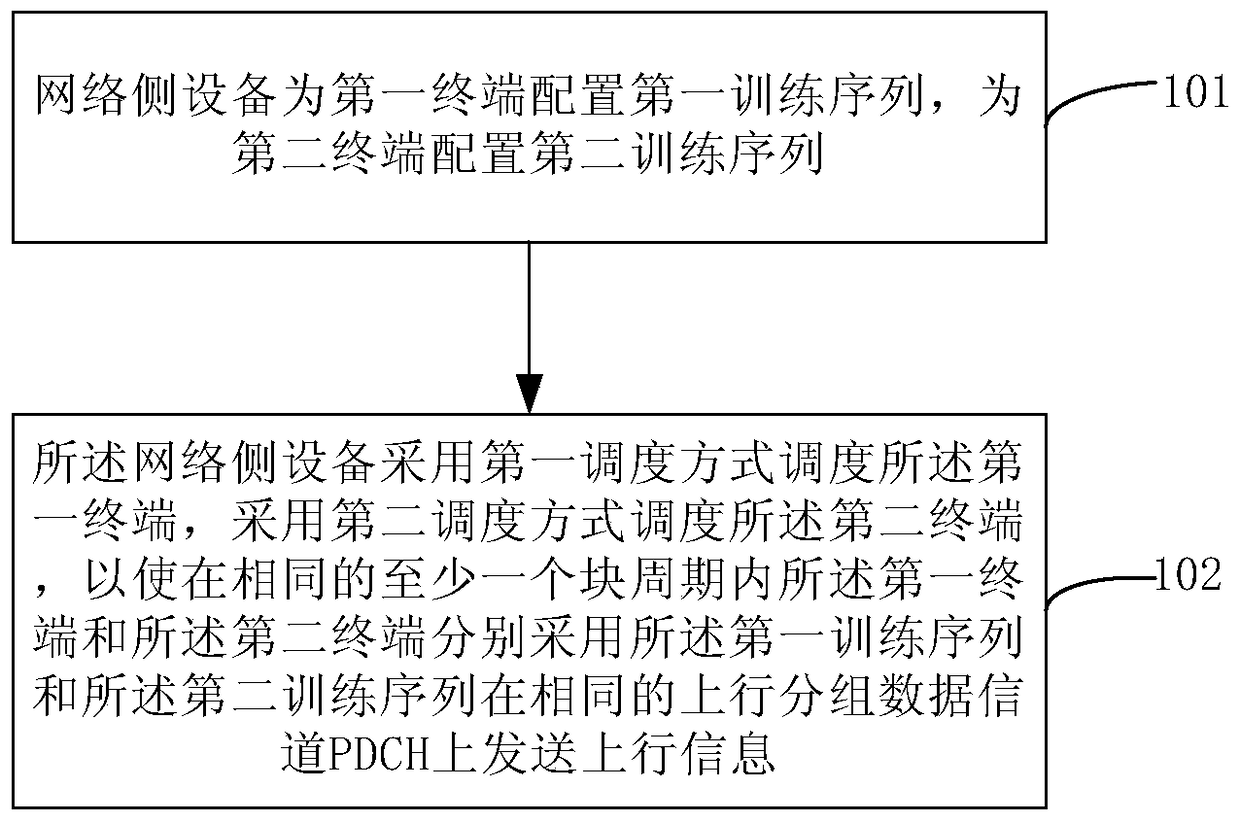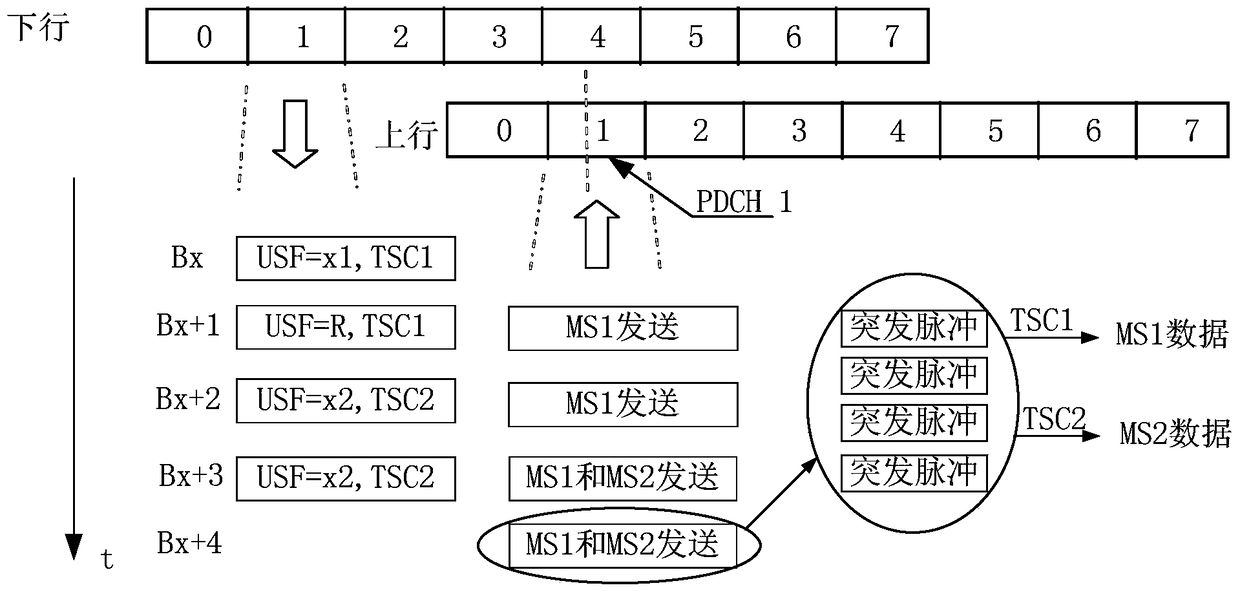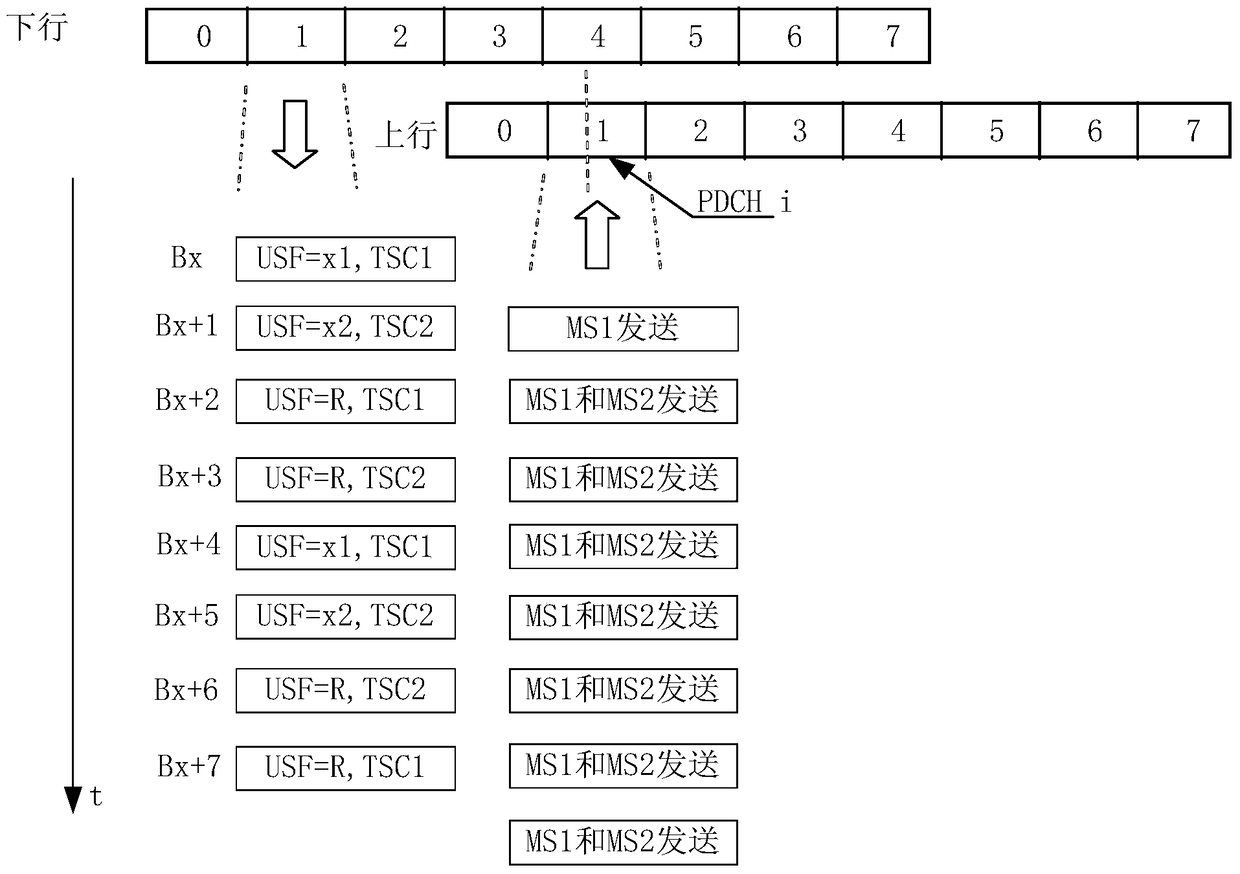Method for scheduling uplink information and network side equipment
A network-side device and device technology, applied in wireless communication, digital transmission system, baseband system, etc., can solve problems such as access conflict, access failure, and lower wireless access success rate
- Summary
- Abstract
- Description
- Claims
- Application Information
AI Technical Summary
Problems solved by technology
Method used
Image
Examples
Embodiment 1
[0112] figure 1 It is a flowchart of a method for scheduling uplink information in Embodiment 1 of the present invention. like figure 1 As shown, the method includes the following steps.
[0113] Step 101: The network side device configures a first training sequence for the first terminal, and configures a second training sequence for the second terminal.
[0114] Wherein, the first training sequence is different from the second training sequence.
[0115] Wherein, the network side device may be a base station, which is not limited here.
[0116] Step 102: The network side device schedules the first terminal in a first scheduling manner, and schedules the second terminal in a second scheduling manner, so that the first terminal and the The second terminal respectively uses the first training sequence and the second training sequence to send uplink information on the same uplink packet data channel PDCH.
[0117] Wherein, the first scheduling mode may include any one of th...
Embodiment 2
[0143] In Embodiment 2 of the present invention, the first scheduling mode adopts a granular scheduling mode, and the second scheduling mode adopts a non-granular scheduling mode or a round-robin scheduling mode. Specifically, the first scheduling method may be a granular scheduling method combined with a DA scheduling method, and correspondingly, the second scheduling method is a DA scheduling method; or, the first scheduling method may be a granular scheduling method combined with an EDA scheduling method , correspondingly, the second scheduling mode is the EDA scheduling mode.
[0144] figure 2 It is a schematic diagram of time slots of the method for scheduling uplink information according to Embodiment 2 of the present invention, the first scheduling mode is a granular scheduling mode, and the second scheduling mode is a non-granular scheduling mode. in, figure 2 Only the first scheduling method is the granular scheduling method combined with the DA scheduling method,...
Embodiment 3
[0168] In Embodiment 3 of the present invention, both the first scheduling mode and the second scheduling mode adopt a granular scheduling mode. Specifically, the first scheduling method may be a granular scheduling method combined with the DA scheduling method, or the first scheduling method may be a granular scheduling method combined with the EDA scheduling method, and correspondingly, the second scheduling method may be combined with the DA scheduling method. A granular scheduling method combined with a scheduling method, or a granular scheduling method combined with an EDA scheduling method.
[0169] image 3 It is a schematic diagram of time slots of the method for scheduling uplink information in Embodiment 3 of the present invention. image 3 Only the first scheduling method and the second scheduling method are granular scheduling methods combined with the DA scheduling method as an example for illustration.
[0170] like image 3 As shown, the method for scheduling...
PUM
 Login to View More
Login to View More Abstract
Description
Claims
Application Information
 Login to View More
Login to View More - R&D
- Intellectual Property
- Life Sciences
- Materials
- Tech Scout
- Unparalleled Data Quality
- Higher Quality Content
- 60% Fewer Hallucinations
Browse by: Latest US Patents, China's latest patents, Technical Efficacy Thesaurus, Application Domain, Technology Topic, Popular Technical Reports.
© 2025 PatSnap. All rights reserved.Legal|Privacy policy|Modern Slavery Act Transparency Statement|Sitemap|About US| Contact US: help@patsnap.com



